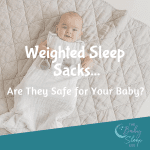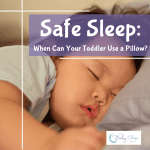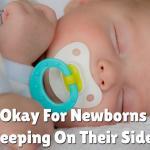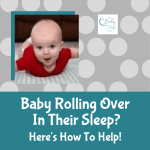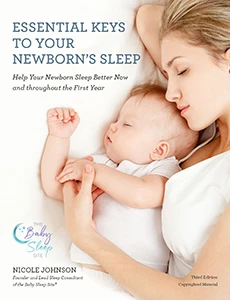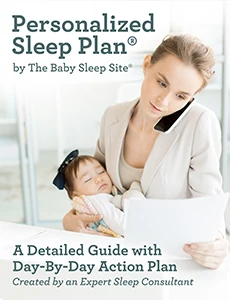
Over the years, as we’ve worked with tens of thousands of families on their children’s sleep, we’ve seen countless baby sleep products come and go. But here’s one that stuck around (one for which we’ve seen many, many iterations): the baby sleep positioner. You know what I’m talking about, right? Those products that go in the crib or bed, and that promise to keep your baby safely positioned for sleep. Many claim to be great for newborns, as they keep baby cozy and snug. Others claim to be ideal for babies with reflux. But are these products really all that they claim to be? And, most importantly, are sleep positioners for your baby’s sleep safe?
Sleep Positioners and Sleep Devices
Sleep positioners and sleep devices like crib wedges, head-shaping baby pillows, baby “nests” and head-and-neck supporters are usually used inside your baby’s crib. Other stand-alone sleep devices are designed to rest directly on the floor. All of these sleep positioners and sleep devices generally promise to do the same things. Keeping your baby positioned properly, elevating your baby’s head, helping with baby’s reflux symptoms, solving any flat-head problems your baby might have from spending so much of her sleep time on her back, and/or improving your baby’s overall quality of sleep to name a handful.
Do they work? Well, if Amazon reviews are any indication, parents seem to love these products! Many have glowing reviews, with parents boasting that their babies sleep for hours in them. But are these products safe? Regardless of whether or not they work or if you absolutely love them, should you be using them in your baby’s sleep space?
Sleep Positioners and Sleep Devices: Not Safe For Unsupervised Sleep
We cannot say this enough: sleep positioners are not safe for unsupervised sleep. While some of our U.K. clients have told us that sleep positioners are approved for overnight crib use in the U.K., this is not the case in the United States. The Consumer Product Safety Commission has released several warnings in the past years. The warnings urge parents not to use sleep positioners or in-the-crib sleep devices. Babies can (and have) rolled in these devices or become wedged between the sleep positioner and the floor or mattress. No matter how foolproof and safe these sleep devices claim to be, there are often stories of injuries or worse. You should never allow your baby to sleep unsupervised in anything but a crib containing a firm mattress and a tight-fitting crib sheet and nothing else.
Now, to their credit, the makers of these sleep positioners and devices seem (technically) to be following these guidelines. The makers of the Dock-a-Tot, for instance, do not expressly state on their website that the Dock-a-Tot is to be used for sleeping. Instead, they claim it’s great for tummy time, diaper changes, “lounging,” and “resting.” Similarly, the dexBaby Day Dreamer claims that the Day Dreamer allows mom to get “a few moments to herself.” Pictures on their website also only show the Day Dreamer being used for supervised sleep.
But here’s the issue… Browse Amazon reviews or customer testimonials of any sleep positioner or sleep device, and you’ll find that parents are using these products in their babies’ cribs at night, all night long, with no supervision. And, as stated, this is not safe.
Sleep Positioners and Sleep Devices: Should I Avoid Them At All Costs?
Here’s some good news. While sleep positioners and sleep devices should never be used in your baby’s crib and/or during unsupervised sleep, you can certainly use them while your baby is being directly supervised. Many positioners and devices are great to use for tummy time, or when your baby is resting next to you. They can provide an easy way to ensure your baby is content, which in turn gives you a much-needed free arm or two.
Sleep Positioners and Sleep Devices: What’s an Exhausted Parent To Do?
It’s no wonder, really, that tired parents turn to sleep positioners and sleep devices to get their babies sleeping. What else are exhausted parents and overtired babies to do? As tired parents yourselves, you probably know a thing or two about the siren song of a “miracle” product that promises to give you a happily sleeping baby, right?
But no matter how desperate you become, it is so, so, SO important to put your baby’s safety first!
This does not mean that you have to reconcile yourself to endless sleep deprivation. Not at all! You can help your baby learn to sleep peacefully in a way that is 100% safe. You can gently help your baby learn to sleep with sleep coaching. When you sleep coach, you help your baby gradually overcome any sleep associations and learn to fall asleep more independently. This, in turn, assures that your baby can fall back to sleep after any night wakings or early-nap wakings. Best of all, when you sleep coach, you don’t have to rely on expensive products to put your baby to sleep. Sleep training is a process you can try at home, on your own!

